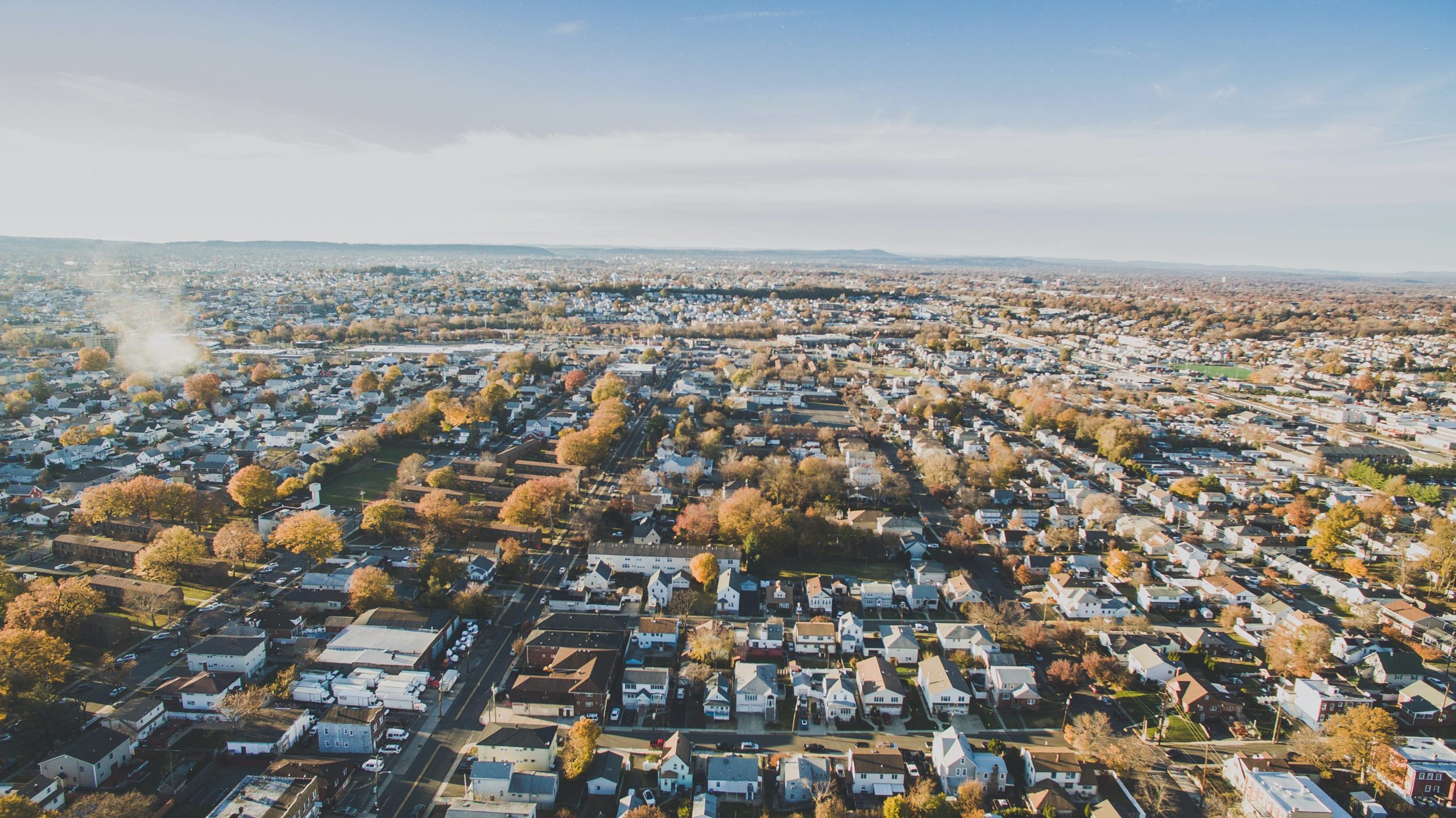Contributions of U.S.-Born Asian Americans and Pacific Islanders
Date: May 25, 2021

Key Findings
- There are more than 6.7 million U.S.-Born Asian American and Pacific Islanders in the United States. Today, U.S.-born Asian Americans and Pacific Islanders are the fastest growing segment of the fastest growing minority group in the United States. Between 2010 and 2019 the U.S.-born AAPI population increased by more than 1.4 million, or more than 26.5 percent.
- The median age of the U.S.-born AAPI population is only 21, much lower than the national average of 43. Whereas more than 4 in 10 people in the United States are now 45 years or older, more than 85 percent of the U.S.-born AAPI population is under the age of 45, and almost 39 percent are under the age of 16.
- While one-third of all U.S.-born AAPI live in California, there are several states seeing much higher growth rates among the U.S.-born AAPI population. For example, Texas saw a 56 percent increase in its U.S.-born AAPI population, more than 164,000.
- While more than half—or 57 percent—of all U.S.-born Asian American and Pacific Islanders have at least a bachelor’s degree, much higher than the U.S. average of 32 percent, there are significant divides among AAPI ancestry groups. While almost 9 out of 10 U.S.-born Taiwanese Americans have a bachelor’s degree, less than 1 in 4 U.S.-born Laotian Americans and Pacific Islander Americans do.
- In 2019 alone, U.S.-born AAPI households earned more than $171.6 billion and paid more than $37.8 billion in federal income taxes and $16 billion in state and local taxes. After taxes, this left U.S.-born AAPI households with more than $117.8 billion in consumer spending power.
- The majority of U.S.-born AAPIs speak English at home and more than 98.2 percent speak English well or as their only language, compared to 97 percent of U.S.-born Hispanics.
- Between 2010 and 2019, the number of U.S.-born AAPI eligible voters grew by 45 percent, from more than 2.5 million to almost 3.7 million in 2019. Given their growth, U.S.-born AAPI Voters now make up 1.6% of the U.S. electorate. In some states, their potential influence as voters is much higher. In Georgia, in which the 2020 presidential election was decided by less than 12,000 votes, there were already more than 55,000 U.S.-born AAPI eligible voters in 2019.
- As more U.S.-born Asian Americans and Pacific Islanders age into the prime of their adult lives, their economic and social influence in the United States is expected to grow dramatically.
Introduction
The sting of the perpetual foreigner stereotype is especially sharp for the more than 6.7 million Asian Americans and Pacific Islanders that were born in the United States. While many are fiercely proud of their heritage and culture, U.S.-born Asian Americans and Pacific Islanders are also undeniably American. More importantly as the data shows, they make up a demographically and economically ascendant part of the U.S. population, one whose importance is expected to grow as more of this relatively young population age into adulthood.
In this last report for AAPI Heritage Month, we take a closer look at the U.S.-born AAPI community, its growth and its contributions to the U.S. economy, and consider its future influence in the years to come.
Population Growth
As more significant waves of AAPI immigrants settled in the United States and eventually started families after discriminatory immigration quotas were lifted in 1965, the U.S.-born AAPI population began to grow. Today, U.S.-born Asian Americans and Pacific Islanders are the fastest growing segment of the fastest growing minority group in the United States. Between 2010 and 2019 the U.S.-born AAPI population increased by more than 1.4 million, or more than 26.5 percent.
Similar to the AAPI population overall, U.S.-born Asian Americans and Pacific Islanders are concentrated a few large states. While one-third of all U.S.-born AAPI live in California, there are several states seeing much higher growth rates among the U.S.-born AAPI population. For example, Texas saw a 56 percent increase in its U.S.-born AAPI population, or more than 164,000 between 2010 and 2019. Even states with less well-known AAPI populations saw above average increases in the number of U.S.-born AAPI residents, like Georgia, which saw an increase of 38.5 percent, or more than 36,000, new U.S.-born Asian American and Pacific Islanders.
The diversity seen among the overall AAPI population is mirrored in large extent among the U.S.-born AAPI population. Nearly 1 in 5, or more than 1.3 million, U.S.-born Asian Americans and Pacific Islanders were Chinese Americans. They were followed closely by more than 1.2 million U.S.-born Indian Americans and almost 1.1 million U.S.-born Filipino Americans.
Aside from Native Hawaiians and Japanese Americans, the majority of U.S.-born Asian American and Pacific Islanders are the children or grandchildren of immigrants—many of whom were only able to immigrate to the United States after 1965. Given this, many of them are still relatively young, especially when compared to the rest of the U.S. population. While the median age among all people in United States was 43, for the U.S.-born AAPI population it was only 21. This means that the vast majority of U.S.-born Asian Americans and Pacific Islanders still have much of their lives to acquire skills and contribute even more to the U.S. economy and American society.
The age divide is even more striking when we consider the age distribution of the U.S.-born AAPI population compared to the United States overall. Whereas more than 4 in 10 people in the United States are now 45 years or older, more than 85 percent of the U.S.-born AAPI population is under the age of 45 and almost 39 percent are under the age of 16. However, not all U.S.-born AAPI groups are uniformly young. For example, more than 6 out of 10 U.S.-born Japanese Americans are 45 years or older, reflecting the long history of Japanese Americans in the United States.
Although many U.S.-born Asian Americans and Pacific Islanders can speak a language other than English, the majority of U.S.-Born AAPIs speak English at home and they are nearly universally fluent in English. More than 98.2 percent of U.S.-born Asian Americans and Pacific Islanders speak English well or better, compared to almost 97 percent of U.S.-born Hispanics.
Like the AAPI community in general, the lingering model minority myth also impacts U.S.-born Asian Americans and Pacific Islanders. Some of this is grounded in fact. More than half—or 57 percent—of all U.S.-born Asian American and Pacific Islanders have at least a bachelor’s degree, much higher than the U.S. average of 32 percent. This however elides the fact that there are significant divides among AAPI ancestry groups, with some groups reporting educational attainment rates well under the national average. For example, while almost 9 out of 10 U.S.-born Taiwanese Americans and more than 3 out of 4 Indian and Chinese Americans have a bachelor’s degree, less than 1 in 4 U.S.-born Laotian Americans and Pacific Islander Americans do.
This inequality in educational attainment translates into significant income inequality. U.S.-born AAPI workers who lack a college degree earn an average of $24,000, compared to $67,000 for college-educated U.S.-born AAPI workers.
Today, income inequality among U.S.-born Asian Americans and Pacific Islanders now mirrors that of the U.S. average, with the top 10 percent of U.S.-born AAPI earners making 8.2 times what the bottom 10 percent of U.S.-born AAPI earners make.
However, given the high levels of education attainment among the U.S.-born AAPI population, the median income for U.S.-born AAPI workers is significantly higher than the U.S. median income. This translates into U.S.-born Asian Americans and Pacific Islanders becoming an economic powerhouse. In 2019 alone, U.S.-born Asian American and Pacific Islander households earned more than $171.6 billion and paid more than $37.8 billion in federal income taxes and $16 billion in state and local taxes. After taxes, this left U.S.-born AAPI households with more than $117.8 billion in consumer spending power.
Total household income, taxes, and spending power, U.S.-born AAPI Households
| Household Income | $171.6 Billion |
| Federal Income Taxes | $37.8 Billion |
| State and Local Taxes | $16.0 Billion |
| Spending Power | $117.8 Billion |
Income, Taxes and Spending Power for 10 Largest U.S.-Born AAPI Ancestry groups
| Ancestry Group | Household Income | Federal Income Taxes | State and Local Taxes | Spending Power |
|---|---|---|---|---|
| Chinese | $45.4 Billion | $10.6 Billion | $4.4 Billion | $30.4 Billion |
| Indian | $23.6 Billion | $5.7 Billion | $2.1 Billion | $15.7 Billion |
| Filipino | $25.4 Billion | $5.2 Billion | $2.3 Billion | $17.9 Billion |
| Vietnamese | $10.7 Billion | $2.3 Billion | $874 Million | $7.5 Billion |
| Korean | $14.3 Billion | $3.3 Billion | $1.3 Billion | $9.6 Billion |
| Japanese | $23.3 Billion | $5.0 Billion | $2.2 Billion | $16.1 Billion |
| Hmong | $2.4 Billion | $386 Million | $224 Million | $1.8 Billion |
| Hawaiian | $4.8 Billion | $840 Million | $479 Million | $3.5 Billion |
| Pakistani | $2.3 Billion | $498 Million | $213 Million | $1.6 Billion |
| Cambodian | $1.4 Billion | $231 Million | $128 Million | $1.1 Billion |
Top 10 States by U.S.-Born AAPI Income, Taxes, and Spending Power
| State | Household Income | Federal Income Taxes | State and Local Taxes | Spending Power |
|---|---|---|---|---|
| California | $66.1 Billion | $14.9 Billion | $6.3 Billion | $44.9 Billion |
| New York | $14.5 Billion | $3.6 Billion | $1.8 Billion | $9.2 Billion |
| Texas | $9.1 Billion | $2.0 Billion | $642 Million | $6.5 Billion |
| Hawaii | $15.7 Billion | $3.1 Billion | $1.7 Billion | $10.9 Billion |
| Washington | $7.4 Billion | $1.6 Billion | $596 Million | $5.3 Billion |
| New Jersey | $5.0 Billion | $1.1 Billion | $497 Million | $3.3 Billion |
| Illinois | $6.5 Billion | $1.4 Billion | $685 Million | $4.3 Billion |
| Florida | $5.1 Billion | $1.2 Billion | $256 Million | $3.6 Billion |
| Virginia | $4.4 Billion | $1.0 Billion | $377 Million | $3.0 Billion |
| Massachusetts | $4.2 Billion | $1.0 Billion | $342 Million | $2.8 Billion |
Workforce and Employment Characteristics
The high rates of educational attainment also mean that U.S.-born Asian Americans and Pacific Islanders have unique workforce characteristics. Given their levels of training and education, it is unsurprisingly that there are disproportionately more U.S.-born AAPI workers employed in STEM occupations than the U.S. average. While only about 7 percent of U.S. workers work in STEM occupations, nearly double that rate, or 13.4 percent of U.S.-born AAPI workers do. In total, there were more than 360,000 U.S.-born AAPI STEM workers in the United States.
Similarly, many of the occupations that have the highest concentrations of U.S-born AAPI workers are also in STEM or in STEM-related healthcare roles. For example, almost 1 in 11 medical transcriptionists in the United States are U.S.-born Asian Americans or Pacific Islanders. While more than 1 in 14 physicians and optometrists are U.S.-born Asian Americans or Pacific Islanders.
In terms of gender, the data reveal that the most popular occupation for U.S.-born AAPI men was software developer, while for U.S.-born AAPI women it was registered nurses.
If we look at just U.S.-born AAPI workers with a college degree, we see again the high concentrations in healthcare, technology, and professional careers. Among those workers without a college degree, retail and service jobs are the most prevalent.
U.S.-Born Asian Americans and Pacific Islanders as Eligible Voters
Between 2010 and 2019, the number of U.S.-born AAPI eligible voters grew by 45 percent, from more than 2.5 million to almost 3.7 million in 2019. Given their growth, U.S.-born AAPI Voters now make up 1.6% of the U.S. electorate. In some states, their potential influence as voters is much higher. For example, there are more than 1.3 million U.S.-born AAPI eligible voters in California alone and they make up more than 1 in 20 voters in the state. In Hawai’i, which has a sizeable Native Hawaiian population as well as a large U.S.-born AAPI population, more than one-third of the electorate is made up of U.S.-born AAPI eligible voters. In states with fast growing U.S.-born Asian American and Pacific Islander populations, we may already be seeing some of the impact of these demographic changes. For example, in Texas, the state with the second fastest growing U.S.-born AAPI population, several races in 2020 were expected to hinge on the turnout among AAPI voters. Similarly in Georgia, in which the presidential election was decided by less than 12,000 votes, there were already more than 55,000 U.S.-born AAPI eligible voters in 2019.
As more U.S.-born Asian Americans and Pacific Islanders age into the prime of their adult lives, their economic and social influence in the United States is expected to grow dramatically. Given that polling has shown that U.S.-born Asian American and Pacific Islanders tend to be more politically active and more progressive leaning, areas or districts that see significant increases in the U.S.-born AAPI population should see even more dramatic political changes.
See the rest of this AAPI Heritage Month’s content and learn more about the AAPI community in general, especially about its growth and diversity, the community’s economic contributions and challenges, and about citizenship and voting among foreign-born Asian Americans and Pacific Islanders.






